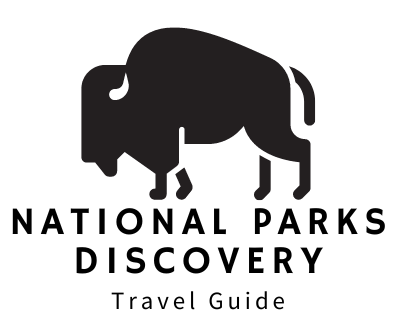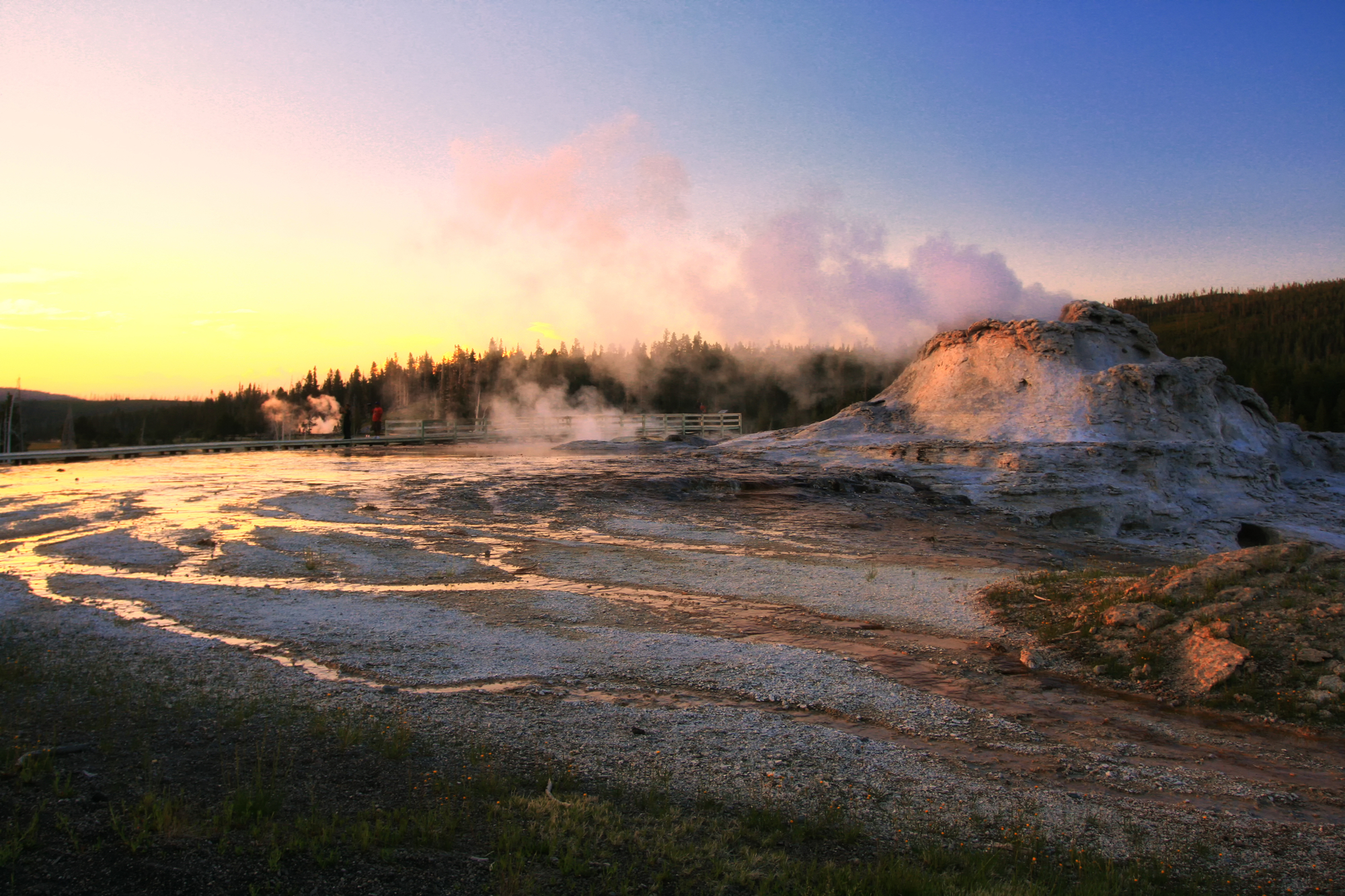Nestled in the heart of North America lies a place where Mother Nature showcases her most stunning creations: Yellowstone National Park. With its unique mix of geothermal wonders, expansive landscapes, and diverse wildlife, Yellowstone captures the imagination of millions every year. Whether you’re a seasoned traveler or a first-time visitor, this park promises an experience like no other. Check out 35 of the Best Yellowstone National Park Travel Tips when you start planning your trip.
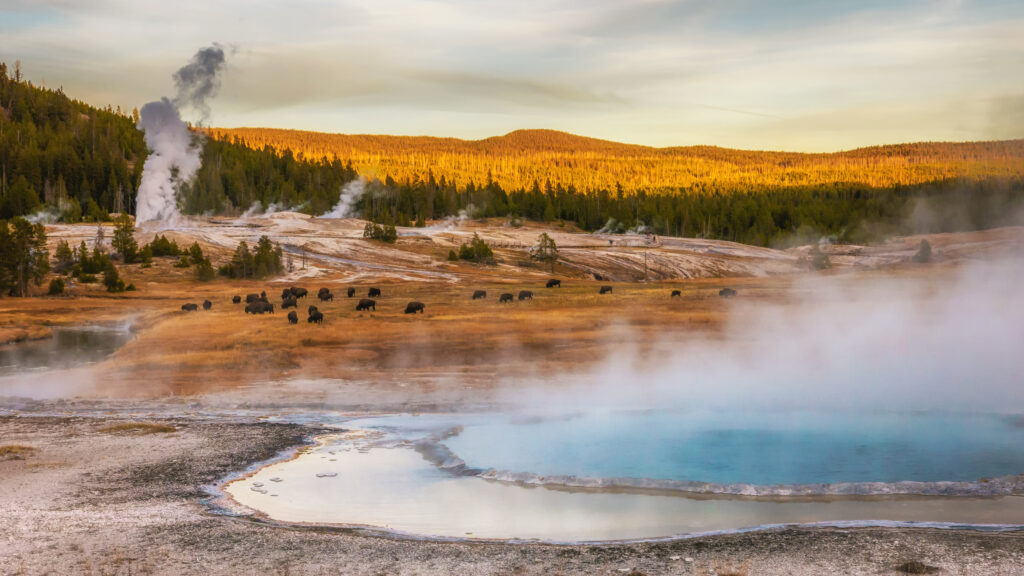
Why Visit Yellowstone National Park?
History and Significance
Established in 1872, Yellowstone has the distinction of being America’s first national park. Over the decades, it has not only paved the way for the establishment of other national parks but has also played a pivotal role in the conservation movement, both in the United States and globally.
Geothermal Marvels
One of Yellowstone’s standout features is its geothermal activity. The park is home to over half of the world’s geysers, with the most famous being Old Faithful – a geyser known for its predictable eruptions. Beyond this iconic spout, the park hosts a myriad of hot springs, mud pots, and fumaroles. The Grand Prismatic Spring, with its vivid colors, and the Mammoth Hot Springs, with its intricate terraces, are just a couple of the countless thermal wonders waiting to be explored.
Vast Landscapes
Spanning over 2.2 million acres, Yellowstone’s terrains are diverse. From the lush Lamar Valley and the serene Yellowstone Lake to the dramatic Grand Canyon of the Yellowstone, there’s a natural spectacle for everyone. Each of these landscapes plays a distinct role in the ecosystem and offers different recreational opportunities, from hiking and camping to fishing and sightseeing.
Flora and Fauna
Yellowstone’s biodiversity is astounding. The park is a sanctuary for grizzly bears, wolves, elk, bison, and countless bird species. The Hayden Valley and the Lamar Valley are particularly renowned as wildlife-watching spots. Meanwhile, the park’s flora ranges from dense forests of lodgepole pines to colorful meadows in full bloom – a testament to the region’s ecological richness.
Cultural Heritage
Beyond its natural wonders, Yellowstone has a rich tapestry of cultural and historical significance. Indigenous tribes like the Shoshone, Bannock, and Blackfeet have connections to these lands dating back thousands of years. Throughout the park, various sites and visitor centers provide insights into the area’s Native American heritage, early exploration, and the evolution of park management and conservation efforts.

Top 10 Best Things to See in Yellowstone National Park
- Old Faithful Geyser:
- One of over 500 geysers in Yellowstone, Old Faithful stands out for its regularity, erupting approximately every 60-110 minutes.
- Its predictability has made it a symbol of the wonders of the natural world. It offers insight into the park’s geothermal activity and the power of the Earth’s inner heat.
- Grand Prismatic Spring:
- An expansive hot spring with deep blue waters at its center that transition to brilliant oranges, yellows, and greens at its edges.
- The vibrant colors are produced by microbial mats, showcasing the ability of life to adapt to extreme conditions and the role microorganisms play in shaping our world.
- Yellowstone Grand Canyon:
- Stretching approximately 24 miles, this canyon has depths up to 1,200 feet and widths of 4,000 feet, with two breathtaking waterfalls: the Upper and Lower Yellowstone Falls.
- Demonstrates the erosive power of water over time and the ever-changing landscape of the park.
- Hayden Valley:
- A vast valley offering sweeping landscapes, marshlands, and meadows.
- This valley is a critical habitat for large mammals and birds. The geology here tells a story of volcanic eruptions and glacial shaping.
- Mammoth Hot Springs:
- Series of terraced, cascading hot springs formed due to the cooling and deposition of calcium carbonate over millennia.
- Showcases the constant evolution of landscapes under the influence of thermal activity and the intricate patterns nature can create.
- Norris Geyser Basin:
- Divided into areas like Porcelain Basin and Back Basin, it features diverse geothermal features, including the world’s tallest active geyser, Steamboat Geyser.
- Represents the raw power and dynamic nature of the park’s geothermal activity.
- Lamar Valley:
- Rolling hills and grasslands bordered by rugged peaks.
- Often dubbed as “America’s Serengeti” due to its rich wildlife. Key location for wolf reintroduction, making it vital for conservationists.
- West Thumb Geyser Basin:
- Situated by Yellowstone Lake, this basin features geysers, hot springs, and fumaroles.
- Illustrates the interaction between geothermal systems and large bodies of water, affecting the ecosystem of the lake.
- Mount Washburn:
- Standing at 10,243 feet, this is a popular hiking spot offering 360-degree views.
- Provides a bird’s-eye view of Yellowstone’s varied landscapes, allowing visitors to grasp the park’s vastness.
- Yellowstone Lake:
- Covering 136 square miles, this freshwater lake has depths up to 390 feet.
- Sitting atop the Yellowstone Caldera, the lake’s geothermal vents influence its ecosystem. It also plays a vital role in the hydrology of the park.
Yellowstone National Park is more than just a destination; it’s an experience, a journey through some of nature’s most awe-inspiring handiwork. Whether you’re gazing at a geyser’s eruption, spotting wildlife in their natural habitat, or simply soaking in the vastness of its landscapes, Yellowstone is a testament to the beauty and wonder of the natural world.
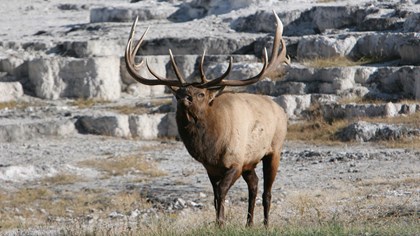
How Many Days Do You Need In Yellowstone?
I highly recommend spending at least 2-3 days in Yellowstone plus adding on the Grand Teton National Park as well since it is only an hour south of Yellowstone. Ideally you need at least 1 day for each of the Loops – the Upper Loop and Lower Loop. And then add on another 2 days for Grand Teton. You’ve already made it out to this more remote part of the country so make the most out of your time here. A Yellowstone road trip is a great way to add on other western national parks such as Badlands, Theodore Roosevelt, Glacier, and more.
How To Navigate The Park
Whether you’re entering from the north entrance, south entrance, or west entrance near West Yellowstone, the park’s main road network makes navigation seamless. Most of the sites and entrances are connected by the Grand Loop road. The Grand Loop is actually more of a figure 8 with an Upper Loop and a Lower Loop. The most famous attractions are mostly on the Lower Loop such as Old Faithful and Grand Prismatic Spring. However the Upper Loop has Mammoth Hot Springs and Lamar Valley.
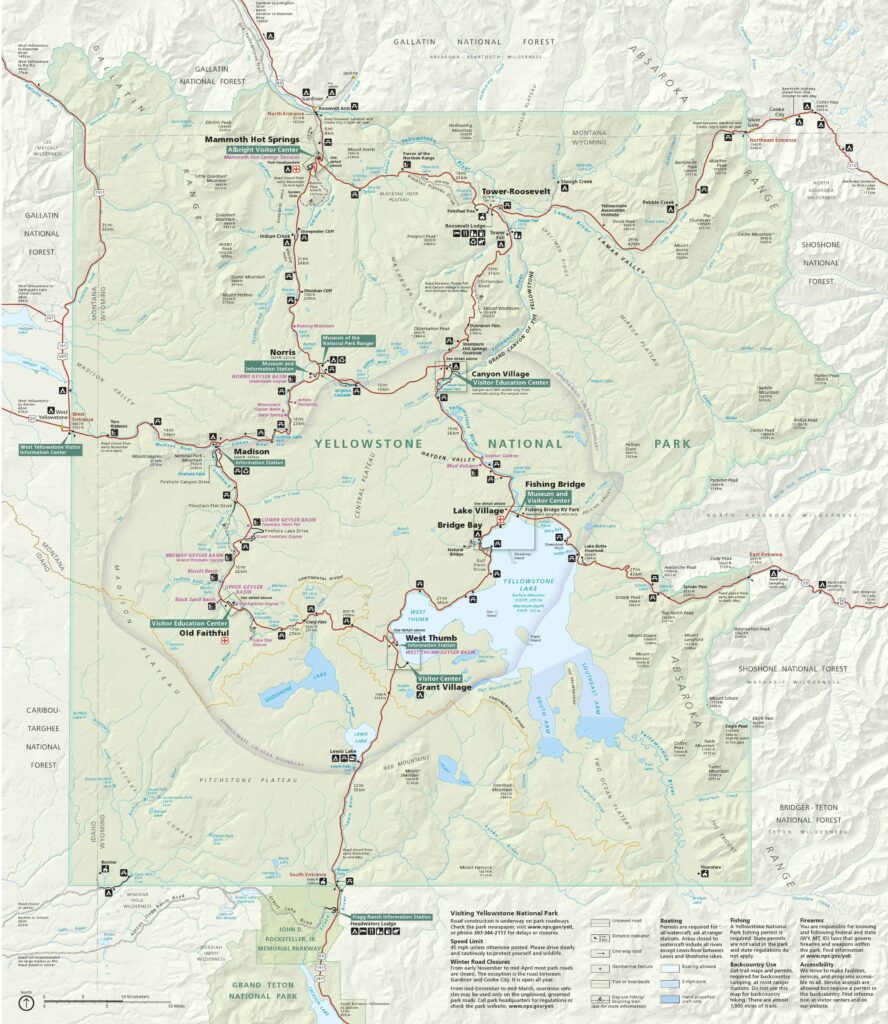
When Is the Best Time To Visit Yellowstone?
These recommendations are only for May to October. The best time to visit is in summer because the weather is good and everything in the park should be open. However you do have to deal with the most crowds. But if you want to get away from the crowds then just walk 5-10 minutes down the trail from any major attraction. Best time to see Yellowstone and not have to deal with crowds would be May, September, and October. However the weather can be an issue so prepare for snow.
How to Get to Yellowstone?
Unless you live within driving distance then you likely will need to fly in and rent a car. For this trip I recommend flying into Bozeman, Montana since it is the closest major airport to Gardiner, Montana (about 1.5 hours). Read more about close airports here.
What To See in Yellowstone In One Day
If you only have one day in Yellowstone then I recommend trying to see all of this list
- Old Faithful Geyser
- Grand Prismatic Spring
- Grand Canyon of the Yellowstone River with the Upper and Lower Falls
- Lamar Valley
- Mammoth Hot Springs
- Hayden Valley
One Day Itinerary For Yellowstone
If I only had 1 day to show someone why Yellowstone National Park is one of the best places in the United States and the world, then this is what I would do. The main issue is that Yellowstone is massive and the main sites are several hours apart. Therefore if you want to squeeze all the highlights into one day then it will mean alot of time in the car. It is much better if you can spread out your visit over several days in order to minimize the driving and have a more relaxing experience. However if one day is all we have then let’s go! Here is my one day itinerary for Yellowstone:
Stay overnight in Gardiner, Montana so you can start your day bright and early. Gardiner is about 1.5 hours away from the Bozeman airport so you need to get there the night before.
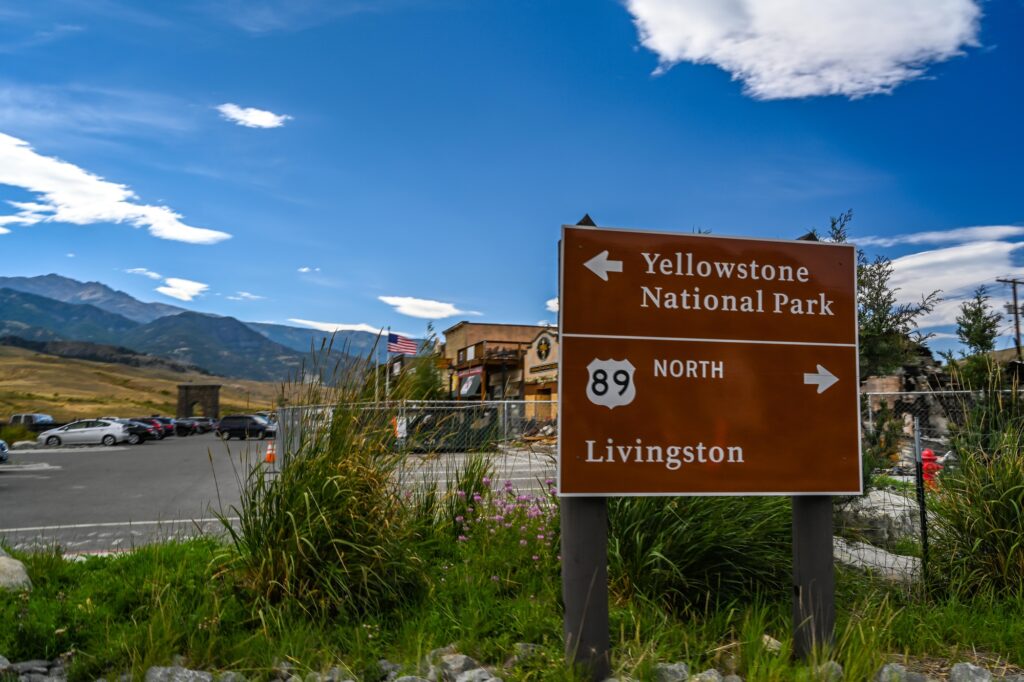
Get the best early start as you can. Do a grab and go breakfast to eat in the car.
Drive into the park through the North Entrance – pay entrance fee unless you already bought your America the Beautiful pass beforehand. Stop and take pictures at the sign and at the Roosevelt Arch if it’s light enough.

Drive down to Mammoth Hot Springs then head east to Tower-Roosevelt area then continue east to the Lamar Valley. Mammoth is a good area to see elk and usually there are several just hanging out around the terraces and hotel area.
Try to be in Lamar Valley right before sunrise if possible. Animals are most active in the early and late parts of the day.
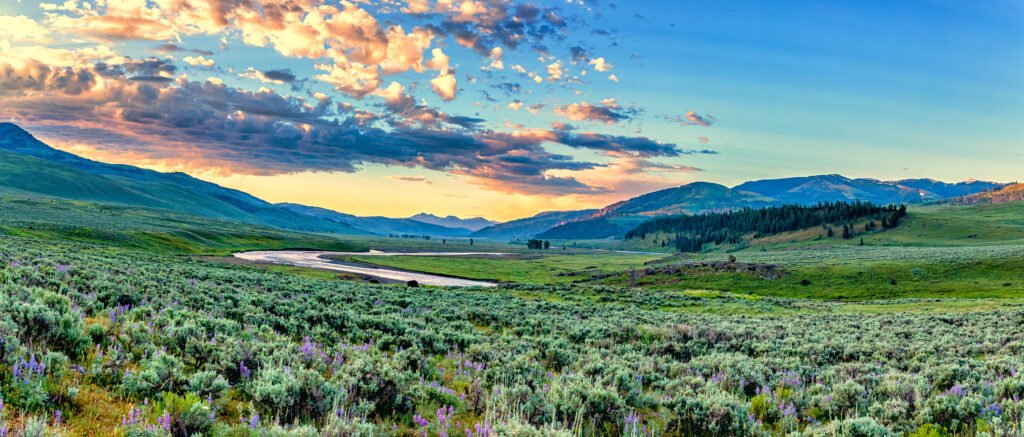
Lamar Valley is known as the Serengeti of North America and for very good reason. Pull over and park in one of the pullouts and grab your camp chairs and binoculars and start watching for animals. You can also do a slow drive down the valley and stop at any interesting spots. Watch for other people to get an idea of where good wildlife are – especially the wolf watcher groups usually up on the hills next to the road. Climb up and see if you can spot some wolves. The wolf watcher people are usually very friendly and more than happy to let you take a glance through their spotting scopes if you don’t have your own.
When you’ve seen your fill then drive back to Tower-Roosevelt then back to Mammoth. Take a quick break and walk around the Mammoth Terraces and grab a snack if you need one then back in the car to head to Old Faithful.
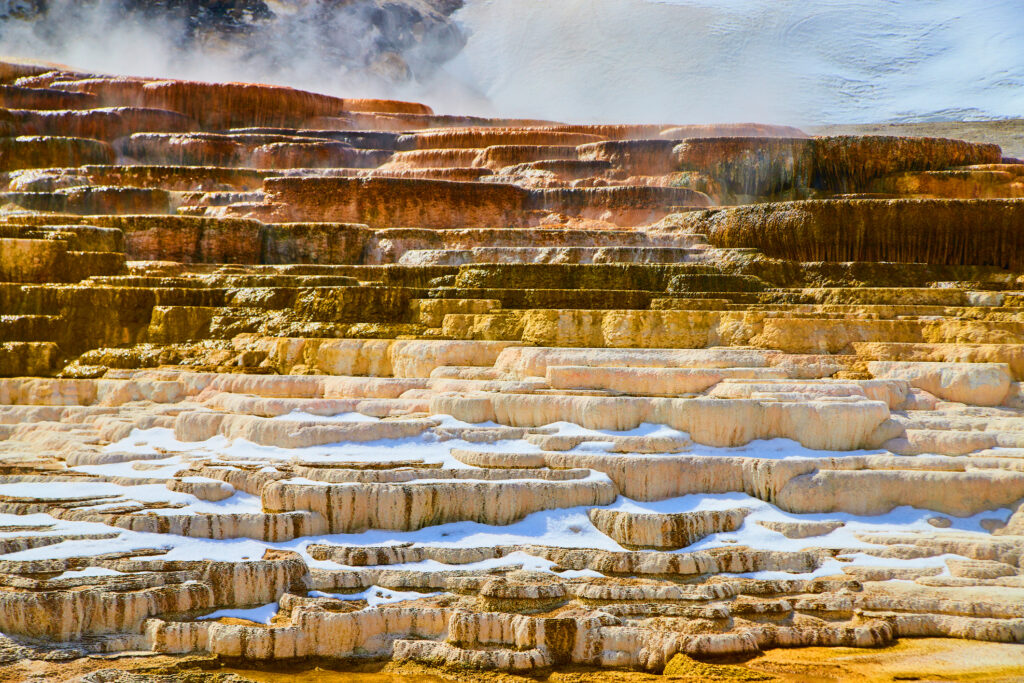
Drive down to Old Faithful which is 2.5 hours from Mammoth. I like to stop at the Artist Paint Pot trail which is a short 1.5 mile hike that does require climbing up stairs. This is a personal favorite of mine because it has the boiling mud pots. Artist Paint Pots are just south of Madison. Do not confuse with Fountain Paint Pots – that’s a different area.
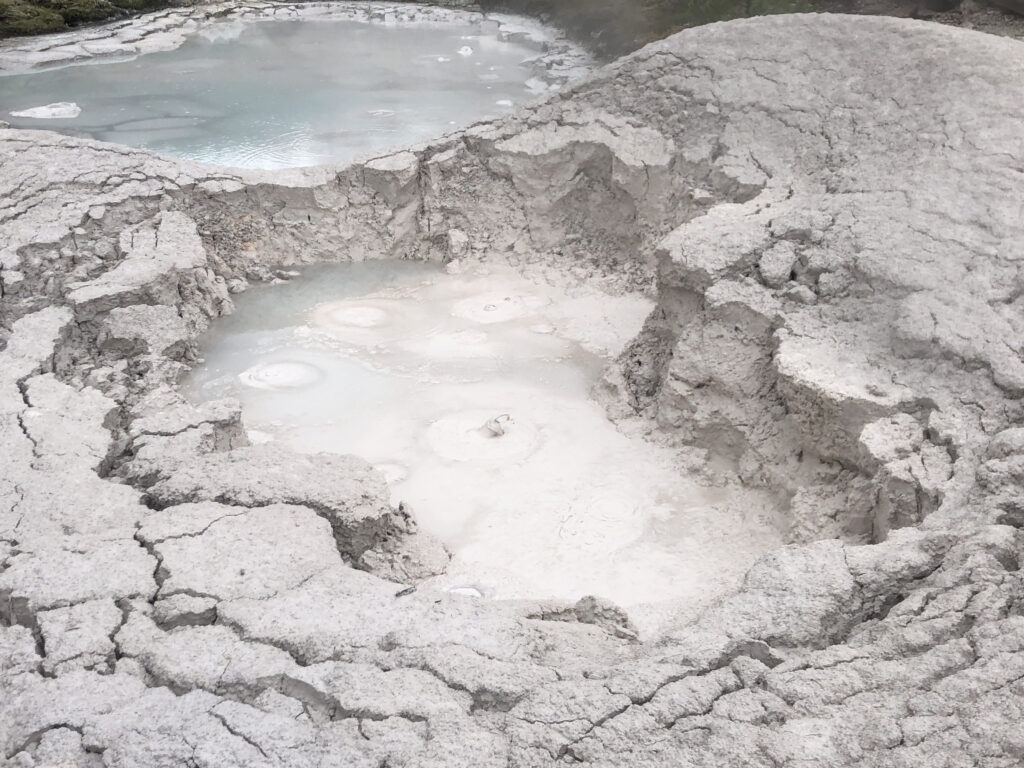
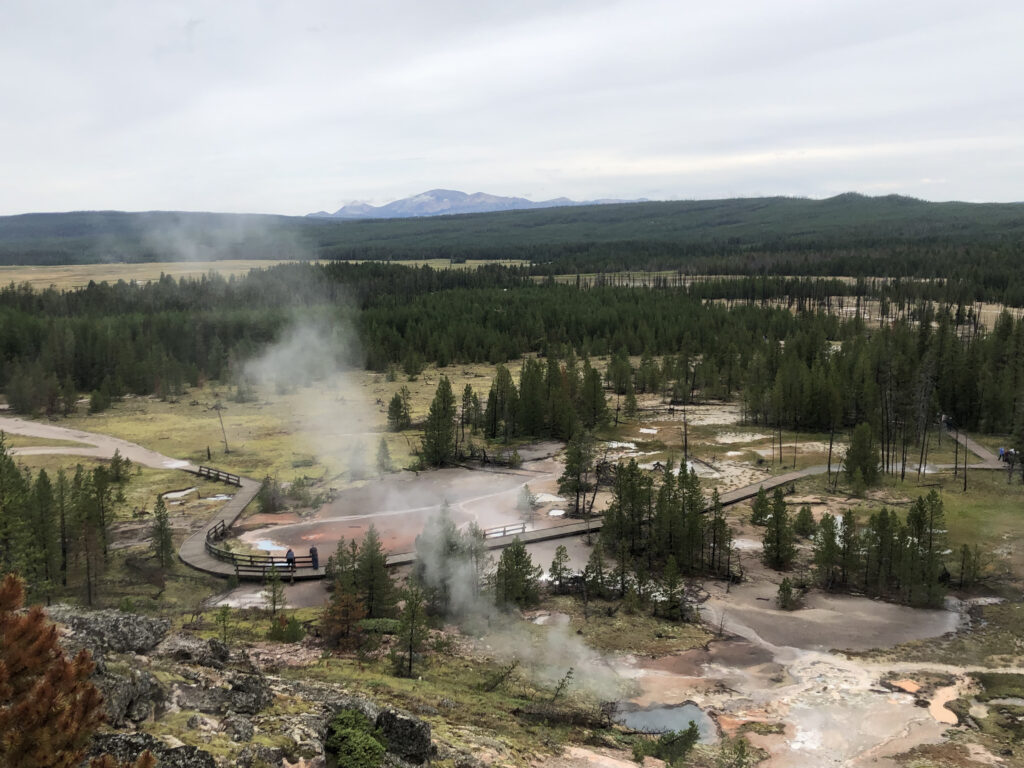
Stop at Grand Prismatic Spring on your drive down to Old Faithful. The best view is on the overlook which can be accessed on the Fairy Falls trail. Grans Prismatic Spring is the largest hot spring in the United States and the third largest in the world. It is famous for the beautiful colors from the different hot water loving bacteria that grow in the spring.
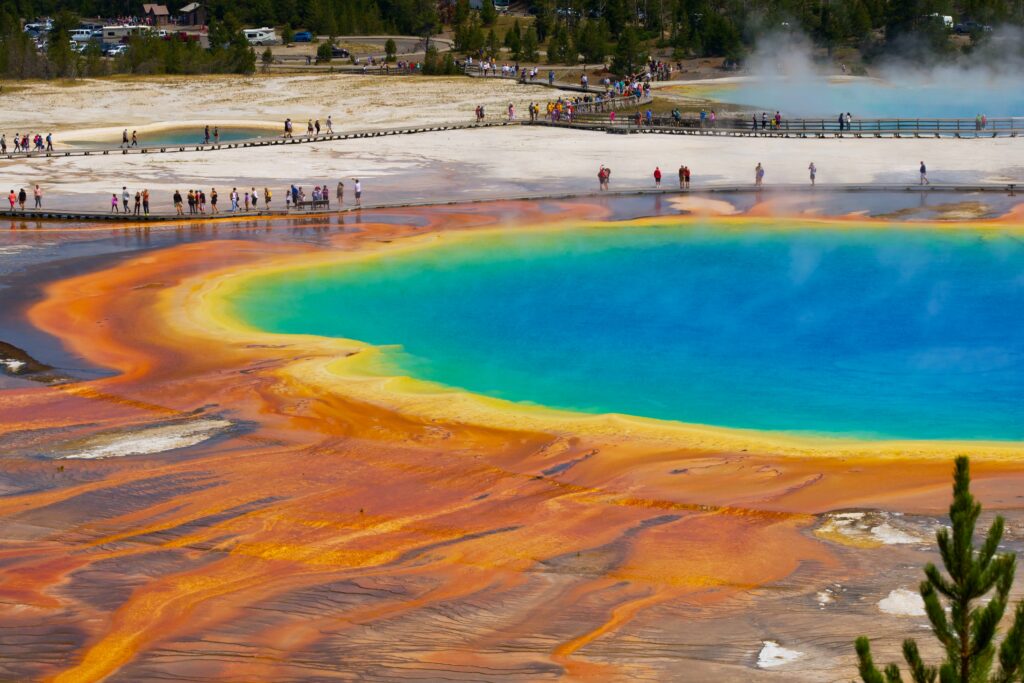
Finally arrive at Old Faithful. Be sure to check when it will erupt so that way you can watch it before heading on the Upper Geyser Basin trail or catch it after the trail. Old Faithful erupts every 90 minutes or so. Hike out to Morning Glory Pool which is about 2 miles from Old Faithful. You will see alot more geysers and springs along the way. There is also a short overlook trail that should not be missed. It gives you a great view of the Old Faithful area.
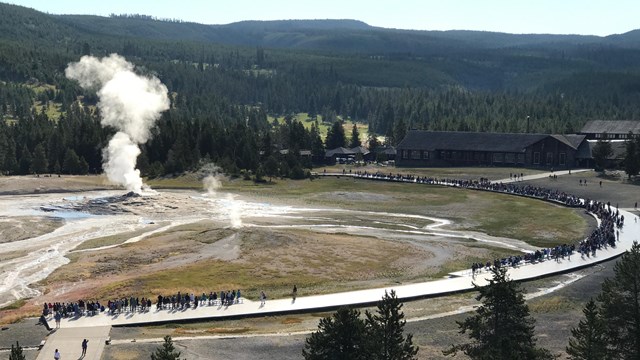
Next we need to head to the Grand Canyon of the Yellowstone River which is about 2 hours from Old Faithful (lots of driving!!!). We will be heading to the Canyon area on the map. The fastest way is to drive back to Madison and Norris to get to the Canyon area. Or add an extra 30 minutes onto the drive and keep going east along the loop to drive by Yellowstone Lake and then through Hayden Valley. It’s up to you on how your timing looks.
The Grand Canyon of the Yellowstone along with it’s famous Upper and Lower Falls are one of the iconic images of Yellowstone. They are located just a few miles past the Canyon area. There are several overlooks and short trails to get to them. I recommend Artist Point as one of the best spots. It is a short walk from the parking lot.
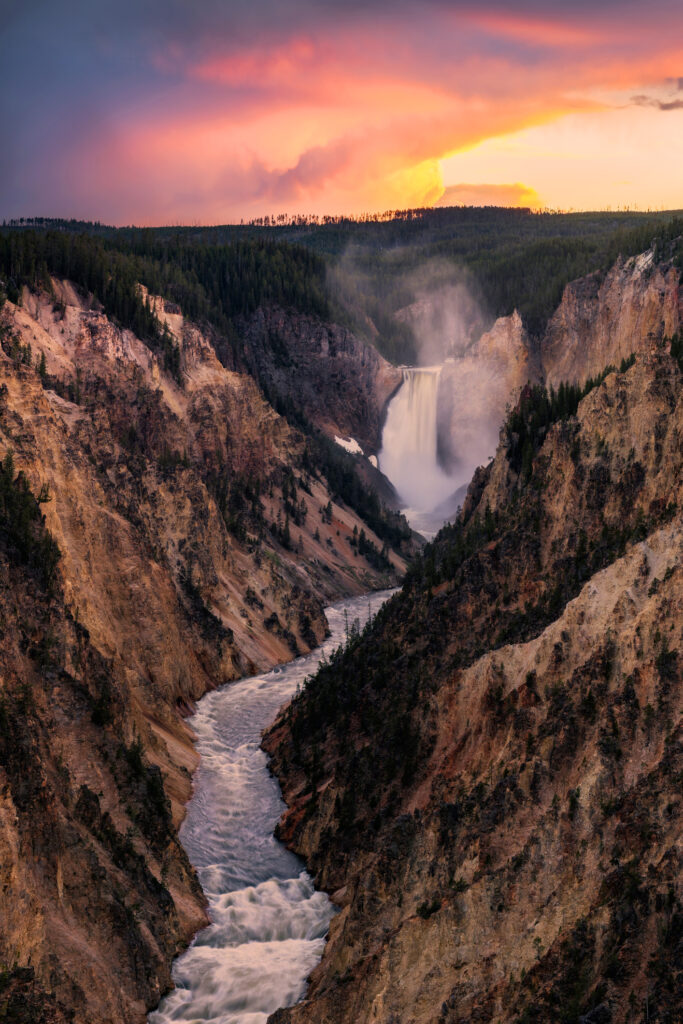
Next I recommend you drive through Hayden Valley which should be getting to be evening time. Hayden Valley is the second best place to view wildlife after Lamar Valley. Again take your time and enjoy. You will probably see lots of bison but black bears and grizzly bears are possible also.
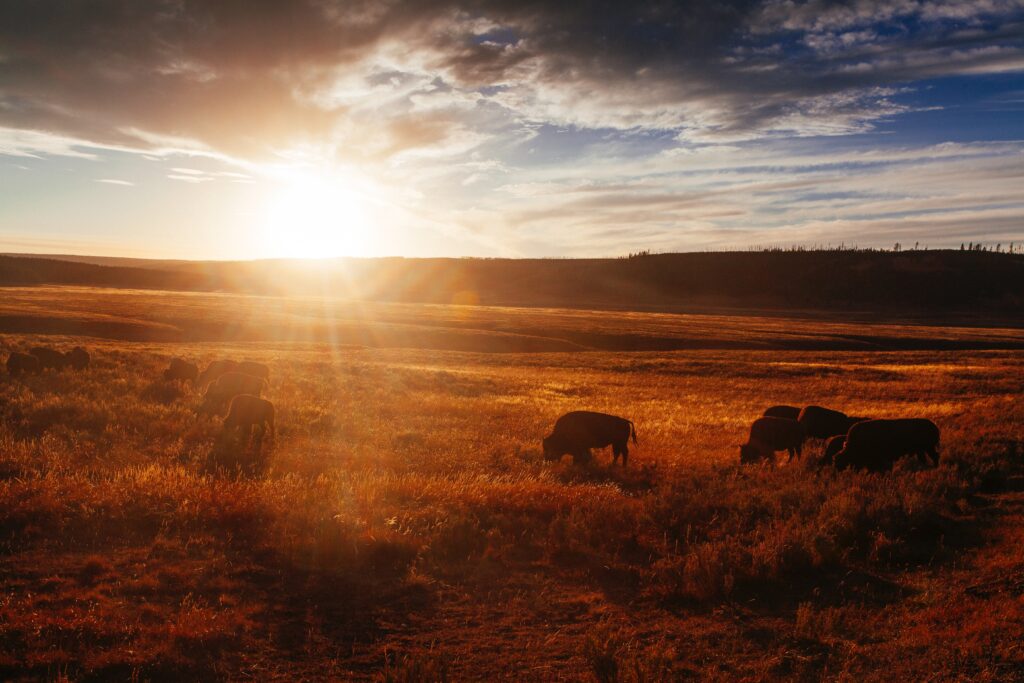
After your long day I recommend staying in Canyon. They have both hotel rooms and cabins which some of the cabins are pet friendly. Some of the cabins do not get the wifi from the hotel so if wifi is important to you then stay in one of the hotel rooms.
I hope you enjoyed your quick whirlwind tour of Yellowstone!
Wait – what about stopping for food? As far as eating lunch and dinner – I recommend bringing food for a picnic lunch and stopping at one of the many picnic areas in the park. Lately Yellowstone has had staffing issues in the dining areas so I’ve had to wait in line for 45 minutes to just be able to order a quick burger. This can be a huge time waster so I highly recommend you pack a picnic lunch to maximize your time in Yellowstone. Plus eating outdoors beats eating in a dining room any day (except I guess if it’s raining)! Dinner you can get at Canyon Village – just watch what time the dining and concessions close.
This itinerary is my personal preference because I want to see lots of wildlife while I am in Yellowstone. You can easily change this up and skip Lamar Valley in the morning and see some of the other geyser basins on the way to Old Faithful like Norris Geyser Basin, Midway Geyser Basin, and Lower Geyser Basin. Also you can skip Lamar and then spend some time at Lake Yellowstone either renting a boat or kayaking once you’ve seen Old Faithful. Please research all the different things to do and see in the park and modify this plan to make it your own.
Modified Slower Pace One Day Itinerary
To have a more relaxing experience and less time driving then this is the itinerary I recommend. It cuts out Lamar Valley and Mammoth Hot Springs but that leaves you more time at the geyser basins.
Start in West Yellowstone, Montana or at Old Faithful Inn and Lodge or at Canyon Village. For this itinerary I’d recommend West Yellowstone or Old Faithful. If you are not staying at Old Faithful then get an early start to beat the lines at the West Entrance.
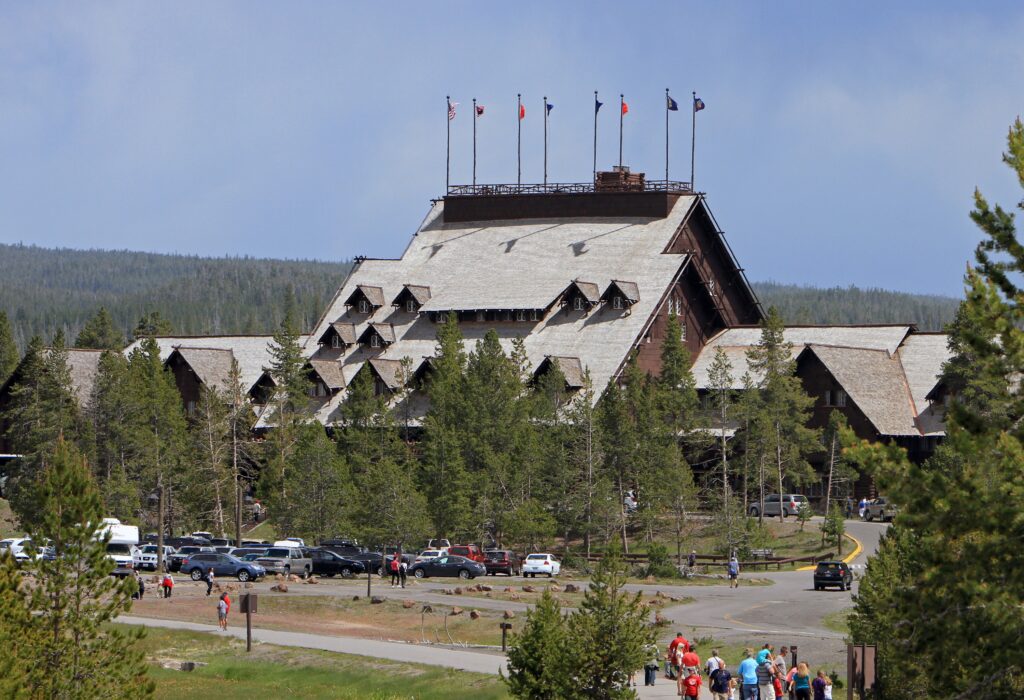
First Stop – Old Faithful and Upper Geyser Basin
Old Faithful is the world’s most famous geyser because it erupts pretty predictably every 90 minutes or so give or take 10 minutes. It can get very crowded during the main parts of the day (like 10 am to 4 pm) so it’s best to see it early in the morning when the sun is rising. Next I would recommend walking the Upper Geyser Basin trail which is mostly paved and on boardwalks. Make sure you go up to the Old Faithful overlook to get a great view of the area. Try to time your hike to see Old Faithful go off while you are up there.
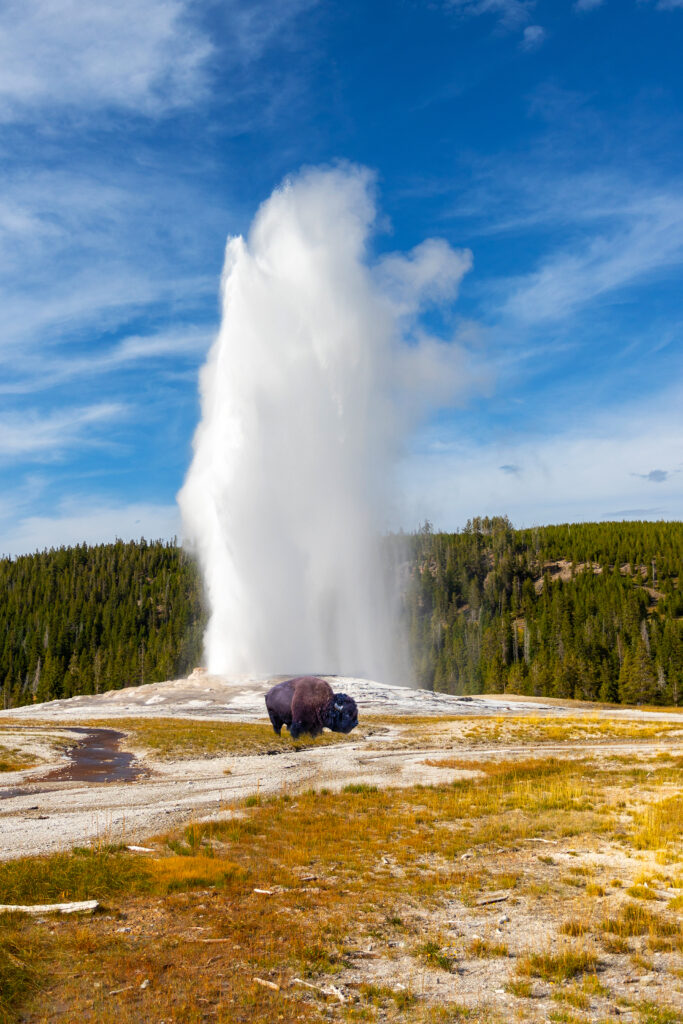
Second Stop – Grand Prismatic Spring and Midway Geyser Basin
Grans Prismatic Spring is the largest hot spring in the United States and the third largest in the world. It is famous for the beautiful colors from the different hot water loving bacteria that grow in the spring. Don’t miss the overlook that is at the start of the Fairy Falls trail. Also walk around the Midway Geyser Basin.
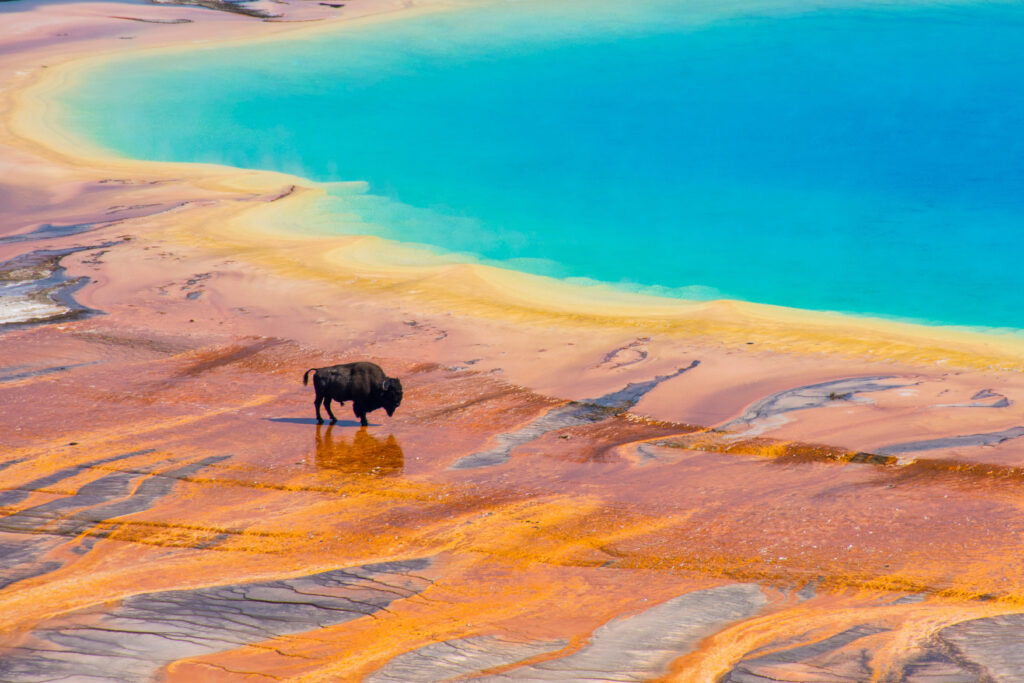
Third Stop – Check out Fountain Paint Pots or Artist Paint Pots
My personal favorite is the Artist Paint Pots but those require bit of a climb up a hill to get a great view of the area but it has the boiling mud that I just love. Fountain Paint Pots is a bit different but more of a flat area that has better accessibility. Artist Paint Pots can be found south of Madison if you are using the National Park Service map they give you at the entrances.

Choose your own adventure: From here you have 2 choices – head to Norris Geyser Basin then on to the Grand Canyon or backtrack down to Old Faithful then onto Yellowstone Lake and the West Thumb Geyser Basin. Personally I would choose to head to the Lake but research both places and see what interests you the most.
Fourth Stop – Norris Geyser Basin
Another great hike around a geyser basin to see all the different features.
OR you could head back down to Old Faithful and then keep going east along the loop road and check out Lake Yellowstone and the West Thumb Geyser Basin. West Thumb is unique because it has alot of hot springs and other geothermal features right next to Lake Yellowstone. The Lake is the largest alpine lake in North America and provides a stunning backdrop to the geothermals.
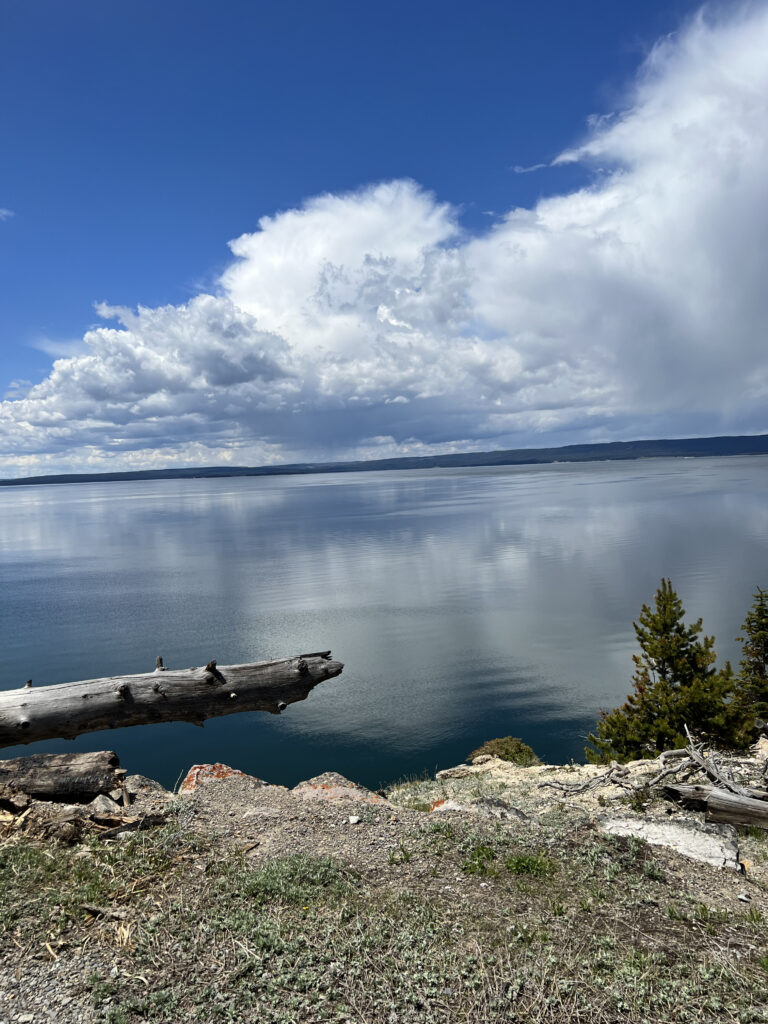
Continue through Hayden Valley if you went by Lake Yellowstone and stop for bison pictures without blocking traffic.
Next Stop – Grand Canyon of the Yellowstone River and the Upper and Lower Falls
Another must see destination in Yellowstone and provides many iconic photos at the different view points. Drive the different rims and stop at all the lookouts. There is even a short hike down to the brink of the Lower Falls that is pretty amazing.
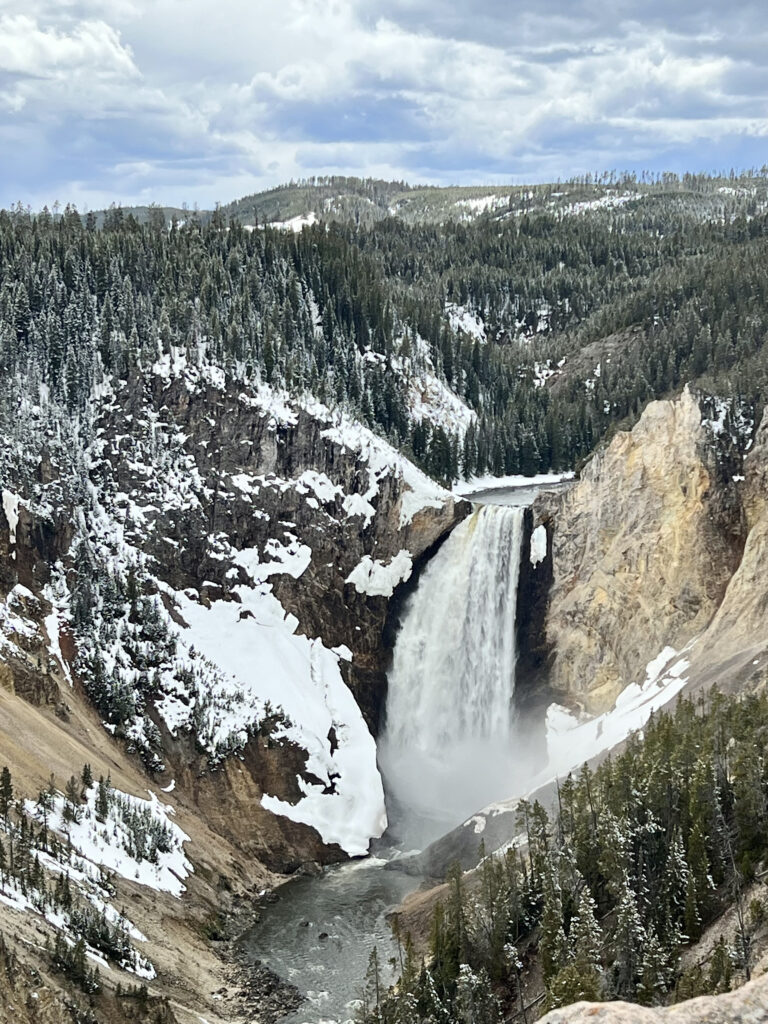
Hayden Valley – next I would head back into Hayden Valley in the evening for more wildlife viewing. Consider picking a pullout to park in and get out your camp chairs. Put your feet up and just wait for the wildlife to come to you.
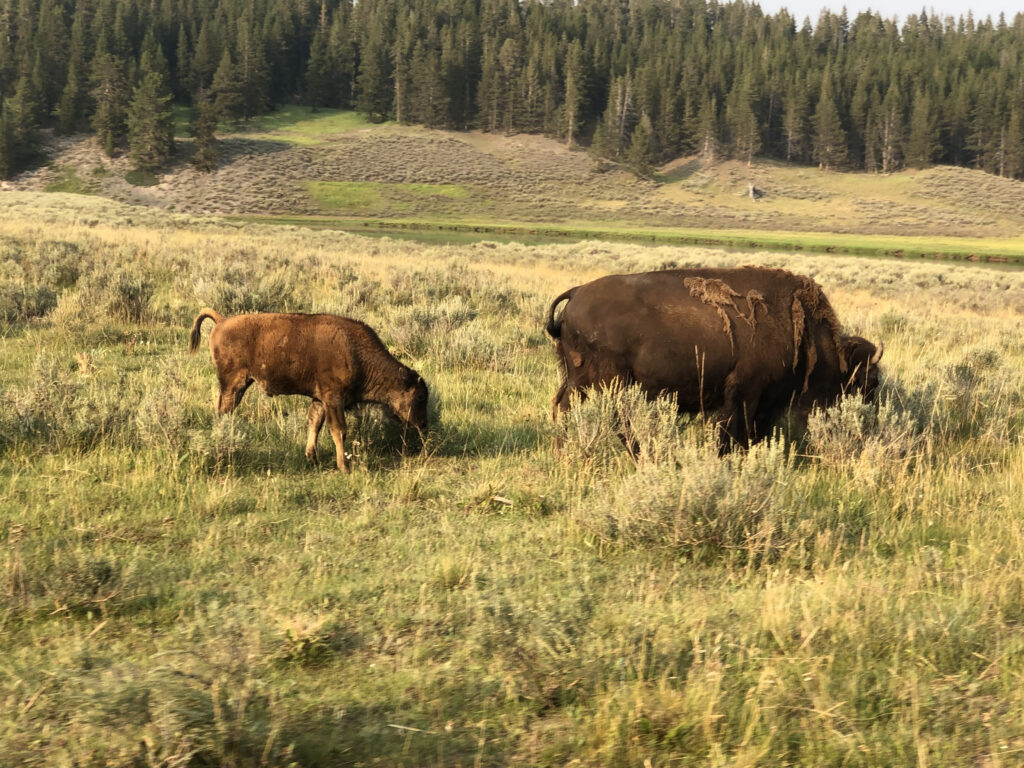
Lodging – tonight I would highly recommend staying in Canyon Village. They have newer modern hotel rooms (no TVs) or rustic cabins. This is one of the best places to stay in the park because of the newer rooms and because of it’s great central location in the park.
If you have another day then I would do the Upper Loop which would be Mammoth Hot Springs and Lamar Valley. Try to do Lamar in either the early morning or early evening for the most active wildlife watching. You can also add on Tower Falls or a horseback ride at Roosevelt.
Read More About Yellowstone
- 10 Common Mistakes to Avoid When Visiting Yellowstone National Park
- What State Is Yellowstone National Park In?
- 35 Best Ways To Save Money In Yellowstone National Park 2023
- Bear Safety in Yellowstone: What Every Visitor Needs to Know
- Morning Glory Pool At Yellowstone National Park
